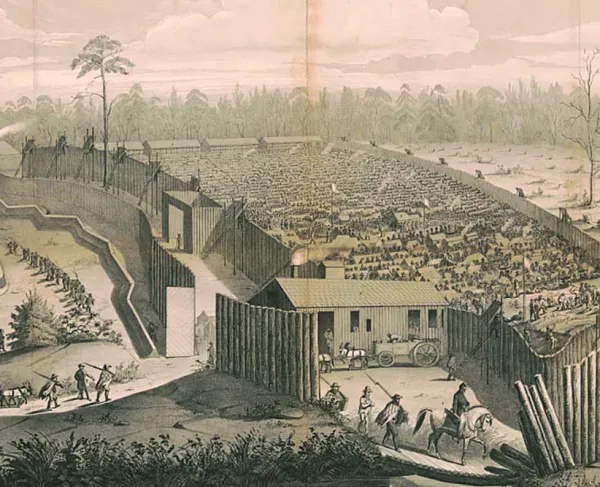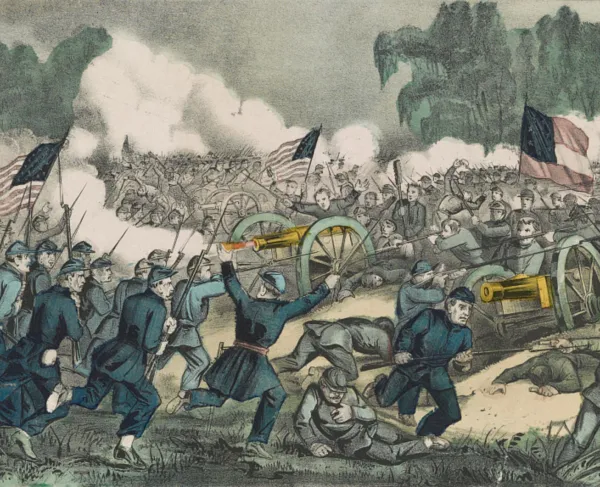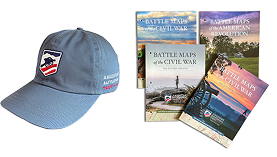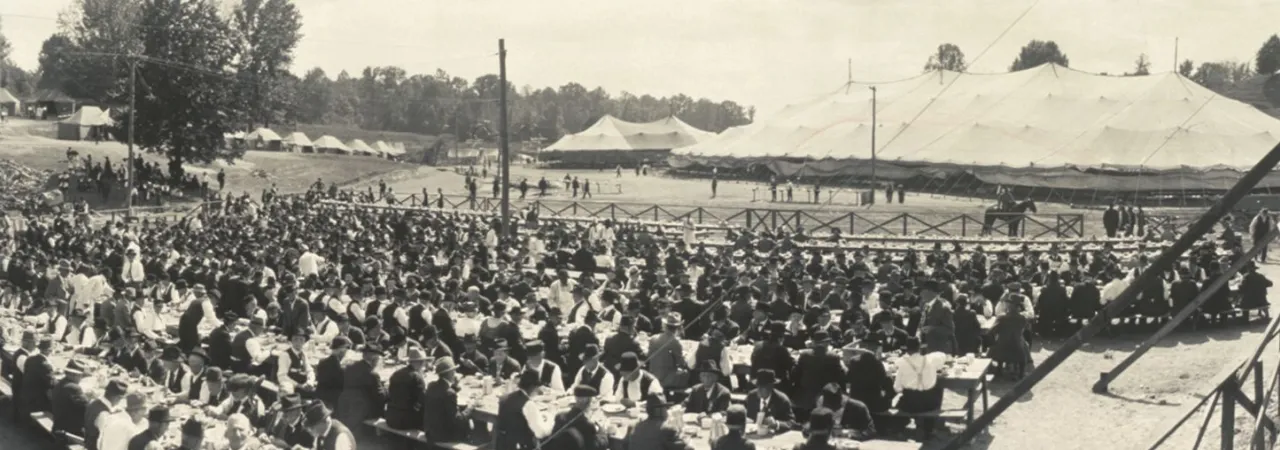
National Memorial Reunion and Peace Jubilee, Vicksburg, MS, Oct. 16-19, 1917, Mess "B"
Over four days in 1917, over 8,000 Civil War veterans returned to Vicksburg, Mississippi. The veterans’ reunion, also called the National Peace Jubilee, gathered Union and Confederate veterans alike to celebrate a legacy of peace more than 50 years after the siege of Vicksburg. From October 16-19, veterans and the public enjoyed a full program of speeches, group prayers, musical performances, monument dedications, battlefield tours and dances. The reunion’s organizers wanted to celebrate the legacy of peace between northern and southern citizens, while in the background the United States was mobilizing for the Great War.
The National Peace Jubilee was authorized by Secretary of War Newton D. Baker, who appointed Colonel W. D. Newbill as the chief organizer. Congress appropriated $150,000 to pay for the reunion. Many state legislatures also contributed funds, totaling an additional $200,000 to help pay for veterans’ travel to Vicksburg. They decided on October rather than the anniversary date of the battle, for more favorable weather.
The organizers had the Gettysburg veterans’ reunion as an example. In 1913, on the fiftieth anniversary of the battle, more than 50,000 veterans returned to Gettysburg. It was the largest reunion of Civil War veterans ever held, with both Union and Confederate veterans in attendance. President Wilson’s remarks at the reunion on July 4 emphasized the camaraderie between the veterans, saying how “wholesome and healing the peace has been.”
The Vicksburg veterans’ reunion was complicated by the United States’ entry into World War I on April 6, 1917. By October, American soldiers were fighting on the European front, and the war prevented notable figures such as President Wilson from attending. Nevertheless, the War Department made every effort to provide the veterans with a comfortable and meaningful experience. Veterans who returned to Vicksburg for the reunion were able to stay on the very land they fought on more than fifty years prior. Much of the land on which the siege and defense of Vicksburg took place became a National Military Park in 1899. The War Department administered the park until it was transferred to the National Park Service in 1933. The reunion camp was set up east of the Railroad Redoubt, where some of the most intense fighting of the siege took place. Preparations included moving around 60,000 cubic yards of dirt, leveling the ground and installing a water system with fire hydrants, drinking fountains, bathrooms and showers.
Tents were in short supply for the Army due to mobilization for the Great War, so Newbill arranged for tents from Chicago and St. Louis. The largest tent covered 48,000 square feet and accommodated 1,500 men. Newbill called the camp “a wonderful canvas city.” All of the tents had cots with pillows and comforters. The Army had 60 trucks at their disposal to transport veterans around, and they were in constant use throughout the reunion. 1,250 members of the 155th Infantry, along with Field Hospital and Ambulance Company No. 3 of the US Army were present for guard duty and general assistance.
Much like a real military camp, the Army had to figure out the logistics of caring for thousands of men. The Army set up two large messes, which could each provide for up to 10,000 veterans. Each mess had ten hotel-sized cooking ranges. The veterans were served breakfast, lunch and dinner at the camp. They ate roast beef, macaroni and cheese, bread pudding, prunes and more. Many of the provisions were shipped out to Vicksburg from New Orleans by rail. The milk had even soured on the hot train before it reached the camp.
The 2 head chefs at the camp and much of the kitchen staff were from New Orleans, who were assisted by many local Black workers who were employed as waiters. Some of the Black waiters were also part of a well-known orchestra out of Greenville, Mississippi, called “Big Six,” which was employed to play music during meals. Each night had its own revelry, with the public joining veterans after evening ceremonies to dance until around 11:00 pm. Newbill noted how the “old vets would join in the dancing at the amphitheater and give some of their ancient stunts to the delight of the crowd.”
Near the center of the camp the Army constructed a stage 40x170’ stage, with bench seating placed up an adjacent hillside which could seat up to 5,000 people. The main speakers included governors from Minnesota, Mississippi and Iowa, as well as former commanders of Confederate and Union armies.
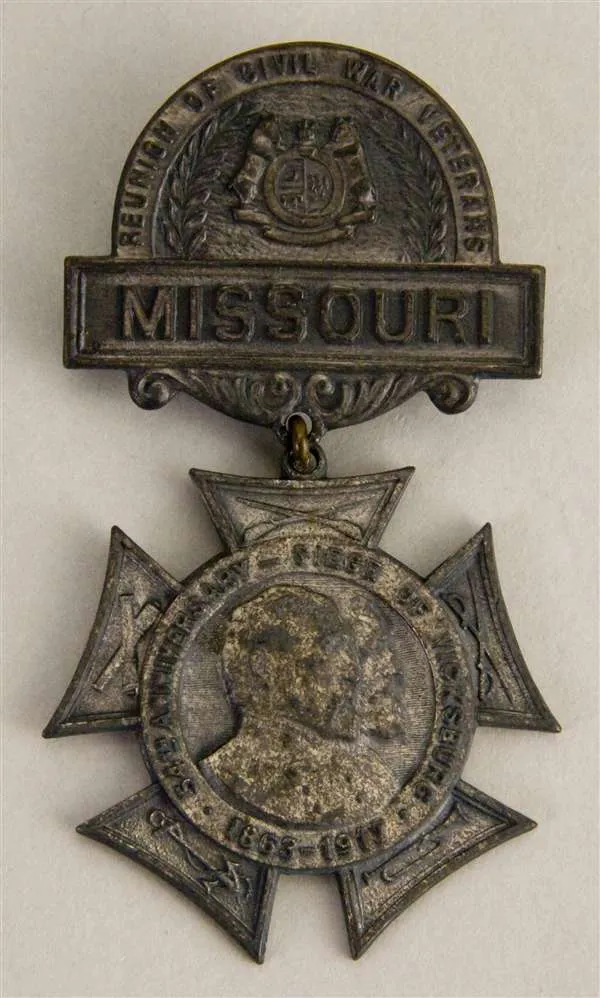
The Peace Jubilee was well attended by Union and Confederate veterans alike. C. W. Netherwood of the 23rd Wisconsin regiment attended the reunion. He was wounded at Vicksburg, shot multiple times, lost much of his jaw, and eventually made a full recovery. Confederate Captain W. T. Ratliff, who commanded a division of artillery during the battle, attended the reunion, and “had the pleasure of meeting a number of his old comrades in arms, as well as a still larger number of Union veterans.” Special transportation was arranged for many groups of veterans by their local communities. The local Superintendent arranged for between 75 and 100 veterans to take a special train to Vicksburg from Biloxi, Mississippi, with the men all wearing their veteran badges. Many photographers came out to Vicksburg to document the reunion, and there are even video recordings of the camp and its guests.
By the conclusion of the event, about $35,000 of the Congressional appropriation for the reunion was unspent. The funds were then used to commemorate the reunion, paying for a Memorial Arch sculpted by Charles Lawhon. The arch was dedicated in 1920 and features peace laurels.
In his report following the conclusion of the reunion, Newbill had this to say about the feeling generated by the program:
[The veterans] looked upon this Park as their own and loved it as sacred soil; and to them it will remain, in keeping with their brave, loyal old spirits and declining years, a vision of rugged autumn beauty, and for them hereafter hold a double significance as a spot where once they struggled in bitter strife, but where they again met over half a century later in the brotherly love of restored confidence and in complete reunion under their original flag.
Further Reading:
U.S. Quartermaster Corps. General Report of the National Memorial Celebration and Peace Jubilee: Vicksburg, Mississippi, October 16 to 19, 1917. Washington, Govt. print, 1917.
Related Battles
4,910
32,363
